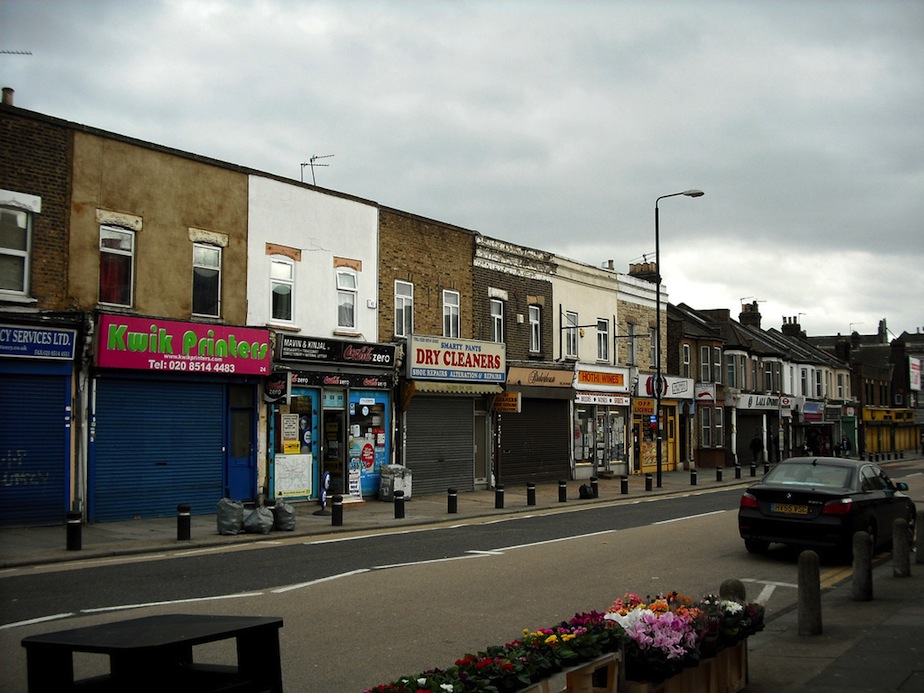Bus Lane Fuss: The Pros and Cons of Buenos Aires’s Metrobus
In the transportation community, the word is out on bus lanes. A recently released study from the Institute for Transportation and Development Policy (ITDP) highlights the many benefits of Bus Rapid Transit, or BRT, compared to rail-based mass transit. Chief among them are the reduced cost of construction and quick preparation time. This owes to the fact that BRT succeeds in its mission of emulating the most important aspects of train systems, without costly vehicles and awkward switching that rail travel entails. One other key find in the study is that BRT lines are more effective at generating economic activity, a tidbit that helped the study get coverage beyond the urban planning press, in mainstream sources like Wired and Forbes.
Though BRT may still be a relatively new thing in the US, its history in Latin America goes back decades, to the founding of the first modern BRT system in Curitiba, Brazil, in the 70s. The system was then implemented in Bogota’s now famous “Transmilenio”, which attracted phenomenal ridership. Today, BRT systems have been built elsewhere in Brazil and Colombia, and are also catching fire in Mexico and Chile. The website brtdata.org shows 1409km of BRT in all of Latin America with over 18 million daily passengers, making it the leading region in BRT worldwide.
Argentina was a latecomer to the Latin American BRT party, but it’s quickly making up for lost time. The city of Buenos Aires has launched a program of “metrobus” lanes on key avenues in the city. These lanes, while lacking some features of “true” BRT, capture the essence of the concept, featuring dedicated bus lanes, covered stations, and detailed maps. Due to the tangled web of zig zagging routes that make up Buenos Aires’ bus system, it’s common for a single bus route to make use of the metrobus lanes for, say, 10 blocks or so, and then branch off. Though very few routes follow the metrobus for its entire length, the system does provide greater efficiency and user friendliness for bus riders.
The first metrobus to open in Buenos Aires ran through the northwest and western neighborhoods, connecting touristy Palermo with working class Liniers, with a one-lane-each-direction route. Just recently, the city has opened its signature BRT project: the 9 de Julio metrobus. If you’ve seen a postcard of Buenos Aires, you’ll probably recognize the 9 de Julio as that massive avenue that surrounds the Obelisk, Buenos Aires’s central landmark. It’s something of a majestic eyesore; a sight to be seen, yet a difficult urban reality to live with. As Daniela Jaime of Plataforma Urbana describes it, the only way to describe the 9 de Julio is that it has a certain “qué sé yo”, the Argentinean equivalent of the French “je ne sais quoi”, which we in English haven’t invented a phrase for yet.
The Metrobus has changed the face of the 9 de Julio, taking away 4 general traffic lanes from the thoroughfare and dedicating them to bus use. Literally dozens of bus routes have been rerouted to the metrobus from neighboring streets, improving local traffic flow. With so many buses to deal with, planners constructed the metrobus as one giant station, where each bus stops roughly every two blocks and there are enough other bus routes to fill in the space in between. Despite running an almost duplicate route with the city’s C line subway, the metrobus performs the important function of helping buses run faster as they leave the city center for the suburbs.

Despite its real benefits, BRT (in the case of metrobus and in general) does not fully replicate the functionality of urban rail. As Yonah Freemark at The Transport Politic points out, the only way for 4-lane BRT to match the carrying capacity of rail systems is to run at extremely high frequencies of one bus every 10 seconds. Also, buses are inherently less energy efficient than trains. And unlike trains, which are easily powered by electric current, buses with few exceptions must be powered by fossil fuel. The Buenos Aires metrobus, despite its benefits, has hit a few bumps in the road. During construction, environmental groups complained of the destruction of historic trees on the northern end of the route. Now, critics highlight that the project ended up costing $200 million pesos (roughly US$35 million) over budget. From a design standpoint, the project doesn’t take advantage of existing subway connections, passing directly over four key stations without any renovation to improve existing subway portals.
Beyond the logistical considerations of the project, there’s an important political element behind the metrobus that can’t be ignored. The metrobus is the brainchild of the city’s mayor, Mauricio Macri, the chief political opponent of Argentina’s President, Cristina Kirchner. Years earlier, in a characteristically controversial move, Kirchner’s government placed a massive portrait of their party’s beloved historical leader and a perennial controversial figure Eva Peron on the 23 story public services building, which prominently overlooks the 9 de Julio. In this sense, Macri’s dramatic reconfiguration of the avenue is a symbolic strike back, quite literally an “in your face” to the once omnipresent visage of Evita. Buenos Aires residents, who tend to nominally support Macri if only out of a deep seated hatred for all things Kirchner and Peron, generally applaud this move.
But more than just a petty issue of party loyalties, the Buenos Aires metrobus illustrates a fundamental truth about BRT: it’s a local politician’s dream come true. Unlike train projects, which are extremely difficult to get going, and if they are in fact built, usually open decades after they break ground, BRT is cheap to build and opens quickly. It gives local leaders the possibility of planning, building, and opening a transit project all within a single term, with ample time left over to reap the political benefits. That’s exactly what Macri has done, using the metrobus as the basis for a series of “green city” promotional videos and, conveniently, a talking point for his party’s elections at the end of October. This is not to say that there aren’t plenty of situations where BRT is the best option for a transit corridor. But its political expediency creates the danger that, even in cases where rail might be a better option, BRT is chosen for political gain.
The latest proposal from the Macri government proves this point perfectly. Riding high off his success with the 9 de Julio metrobus, Macri announced a new plan earlier this month for four new metrobus routes. Some make perfect sense, such as the middle density San Martin Ave. Corridor, which needs better public transit but would be ill served by a more expensive rail line. On the other hand, Macri is also calling for a metrobus line along a freeway, which for its entire length is within 5 blocks of an existing subway line. Unlike the 9 de Julio, this metrobus wouldn’t improve local bus flow, though it might offer a marginal improvement for long distance buses already using the freeway. Ultimately, this particular line makes little sense functionally. But it makes perfect sense politically. It’s a great way for Macri to shore up his base, most of whom live on the other side of town, with an impression of progress that’s more imagined than real.
For the task of creating a transit system that is efficient and sustainable, BRT is without a doubt going to play a key role in the future. But that doesn’t mean it can totally eclipse traditional, less flashy modes of mass transit. Buenos Aires’ metrobus highlights some constructive uses of bus lanes, but it’s also an example of what can happen when public support for this new transportation mode is misdirected by political leaders. It’s an example cities around the world should keep in mind as they seek to strike a balance between this and other modes in their efforts to create more sustainable transportation systems overall.
Drew Reed is an online media producer and community activist specialising in sustainable transportation. He lives in Buenos Aires.


